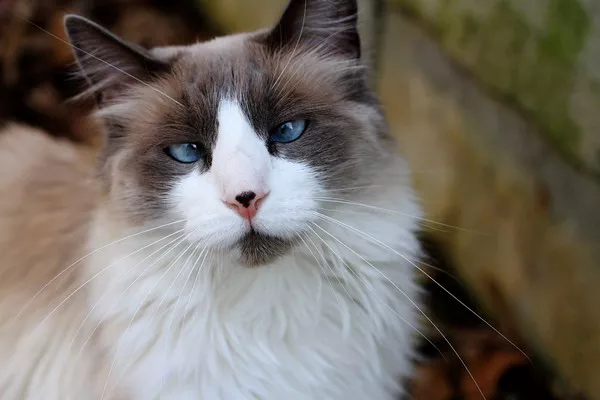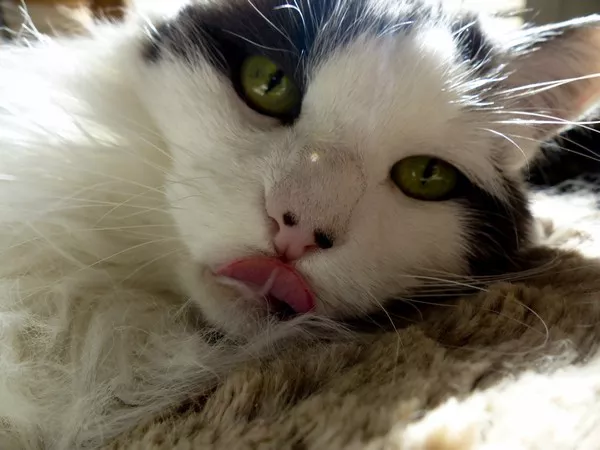Catnip, scientifically known as Nepeta cataria, is a member of the mint family. This perennial herb, native to Europe and Asia, has been widely popular not only for its distinctive aroma but also for its ability to engage and entertain cats. For centuries, catnip has been recognized for its special appeal to felines, creating a sense of joy, excitement, and sometimes even a sense of calm. While humans may enjoy the fresh scent of mint, cats have a more profound reaction to the plant. The reason for this is a compound found in catnip called nepetalactone, which triggers an intense, albeit short-lived, reaction in many cats.
In this article, we will explore the health benefits of catnip for cats and provide guidelines on its safe usage. We will also look at the various ways catnip can enhance your cat‘s physical and mental health, serving as an enriching addition to their environment.
What is Catnip?
As mentioned, catnip is a member of the mint family, which is also home to plants like peppermint and spearmint. Nepeta cataria grows in many parts of the world and is easily identified by its heart-shaped leaves, small white or purple flowers, and aromatic scent. While it may appear similar to other mint plants, catnip’s unique chemical properties set it apart in the world of feline attraction.
The key compound in catnip responsible for its effects on cats is nepetalactone. This compound interacts with a cat’s olfactory system, affecting their behavior. For most cats, exposure to catnip can lead to a variety of behaviors such as rolling, rubbing, meowing, and a heightened sense of playfulness. This reaction, however, is not universal—approximately 30-50% of cats do not respond to catnip due to genetic factors. Despite this, catnip is widely used as a tool for enriching a cat’s environment and can be an excellent source of both mental and physical stimulation.
Common Uses and Why Cats Are Attracted to It
Catnip is often used in cat toys, sprinkled on scratching posts, or even grown in home gardens to allow cats to experience it in its freshest form. But what makes cats so drawn to catnip? The answer lies in how nepetalactone interacts with the brain. When a cat smells or ingests catnip, the nepetalactone binds to receptors in the nasal cavity, activating areas of the brain responsible for emotions, such as the hypothalamus. This interaction causes an exaggerated response—often resulting in playfulness or relaxation.
For many cats, exposure to catnip can mimic the behaviors of a mating ritual. This is why some cats become very vocal or even roll around on the floor as if in a playful frenzy. These behaviors typically last anywhere from 5 to 15 minutes, after which cats usually lose interest. However, after a break, cats can become re-engaged with catnip, as it takes a while for them to regain sensitivity to the compound.
Health Benefits of Catnip
While catnip is well known for its entertaining effects on cats, it also offers a range of health benefits. Catnip is not only a source of joy but also a way to improve a cat’s physical and mental health. Let’s take a closer look at these health benefits:
Mental Stimulation
Cats are highly intelligent and inquisitive animals. They require mental stimulation to avoid boredom and depression, which can manifest in destructive behaviors. Catnip provides an easy and effective way to enrich a cat’s environment, especially for indoor cats who may not have access to the outdoor stimuli they would encounter in nature. The mental stimulation offered by catnip can engage a cat’s brain, encouraging them to play, explore, and exercise their hunting instincts.
By providing catnip in various forms, such as sprinkled on toys or scratching posts, cat owners can offer their pets a unique form of enrichment. This can help prevent boredom, which often leads to anxiety, restlessness, or unwanted behaviors such as clawing furniture or excessive meowing.
Stress Reduction
One of the remarkable benefits of catnip is its ability to reduce stress and anxiety in cats. The plant has calming properties that can help ease a cat’s nerves. This is particularly helpful for cats that experience stress due to changes in their environment, such as moving to a new home, being introduced to new pets, or undergoing medical treatments.
Catnip’s ability to calm a cat is similar to how certain herbs can have a sedative effect on humans. The plant can help reduce anxiety and promote a more relaxed state, making it useful for cats that may be overly anxious or stressed. Whether used in conjunction with calming techniques or as part of a stress-reducing routine, catnip can help to create a peaceful environment for a cat.
Digestive Aid
Catnip can also support digestive health in cats. It has mild carminative properties, which means it can help reduce gas and bloating, improving digestion. Cats that experience occasional stomach discomfort or flatulence may benefit from the digestive properties of catnip. It has been known to soothe the stomach lining and promote more efficient digestion, making it a valuable herb to consider for cats with digestive issues.
While catnip should not replace a balanced diet or medical treatment for digestive conditions, it can be a gentle addition to a cat’s overall health routine. For cats with minor digestive discomfort, catnip can help alleviate symptoms and prevent the buildup of excess gas.
Sedative Properties
Catnip contains mild sedative properties that can help calm anxious or overly energetic cats. The plant is often used as a natural remedy for cats who are hyperactive, especially in stressful situations such as during car rides, vet visits, or during thunderstorms. When given in moderation, catnip can act as a gentle sedative, helping cats to unwind and relax without the need for chemical interventions.
This sedative effect can be particularly useful for cats that experience separation anxiety or show aggression due to stress. A small amount of catnip, whether used with toys or as a treat, can provide a calming effect that lasts for a limited time, allowing the cat to recover from an anxious or tense state.
Behavioral Benefits
Catnip can also be used as a training aid for cats. By strategically using catnip to encourage certain behaviors, cat owners can help reinforce positive habits. For instance, if a cat is scratching furniture, sprinkling catnip on a scratching post can entice the cat to use the post instead. Similarly, using catnip-infused toys can redirect a cat’s attention away from destructive behaviors and encourage them to play and exercise.
Catnip can be a useful tool in behavior modification, as it motivates cats to engage in activities that are beneficial to their physical and mental health. This can be particularly helpful for cats that are bored or under-stimulated.
Non-Toxicity
One of the key factors that makes catnip so popular is its safety profile. Catnip is non-toxic to cats, and when used in moderation, it poses no significant risks. It is perfectly safe for cats to ingest or inhale catnip, provided that it is given in appropriate amounts. However, just like any treat or supplement, overconsumption of catnip can lead to mild side effects, such as vomiting or diarrhea.
It is also worth noting that some cats may be more sensitive to catnip than others. For cats that are more responsive, it is important to limit exposure to prevent overstimulation. Moderation is key when using catnip to ensure that it remains a safe and enjoyable experience for your cat.
Usage of Catnip
Dosage Recommendations
For most cats, a small amount of catnip is sufficient to produce the desired effects. Typically, a teaspoon of dried catnip is enough to sprinkle on a toy or scratching post. Fresh catnip, on the other hand, can be used in slightly larger amounts, as it is less concentrated than its dried counterpart.
It is recommended to provide catnip once or twice a week, depending on the cat’s preferences and sensitivity. Overusing catnip can lead to desensitization, where the cat no longer responds to its effects. A good rule of thumb is to offer catnip every few days and monitor the cat’s response.
Potential Side Effects
While catnip is generally safe, there are some potential side effects to be aware of. Excessive consumption can lead to gastrointestinal issues such as vomiting or diarrhea. Additionally, some cats may become overly stimulated or agitated, which could result in aggressive behavior or hyperactivity. It’s important to monitor your cat’s reaction after exposure to catnip and adjust the frequency or quantity if needed.
Age Considerations
Catnip is typically safe for adult cats, but it should be used with caution in kittens. Kittens under the age of 6 months are less likely to respond to catnip, as their olfactory system is not yet fully developed. For older kittens, introducing catnip gradually can help them become familiar with its effects, but it should be done in small amounts to avoid overwhelming them.
For senior cats, catnip can be a useful tool for encouraging play and mental stimulation, especially for those who are less active or have health concerns that may limit their mobility.
How to Use Catnip
Sprinkling
One of the simplest ways to use catnip is by sprinkling it on toys, scratching posts, or bedding. This method allows the cat to enjoy the benefits of catnip in a way that encourages them to engage with their environment. Sprinkling catnip on a scratching post, for example, can help direct the cat’s natural instincts and encourage the use of appropriate scratching surfaces.
Infused Toys
Catnip-infused toys are another excellent option for providing entertainment and mental stimulation. Toys that are stuffed with dried catnip or sprayed with catnip oil can keep a cat entertained for extended periods. These toys can help stimulate a cat’s hunting instincts and provide an outlet for energy. Moreover, they can be used as a training tool to reward good behavior or distract the cat from undesirable actions.
Fresh vs. Dried
Fresh catnip has a more potent aroma compared to dried catnip, but its effects are usually shorter-lived. Dried catnip, on the other hand, retains its potency for longer periods, making it ideal for use in toys or for sprinkling on surfaces. Both forms can be effective, but it’s important to choose the one that best suits your cat’s preferences.
Conclusion
Catnip offers a range of health benefits for cats, from mental stimulation and stress reduction to aiding digestion and encouraging positive behaviors. When used safely and in moderation, it can be a valuable addition to your cat’s environment, improving their overall well-being. As with any pet product, it is important to observe your cat’s individual response and adjust the usage accordingly. By incorporating catnip into your cat’s routine, you can enhance their life with both fun and health benefits.
Related Topics



























